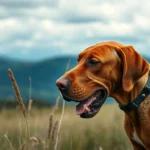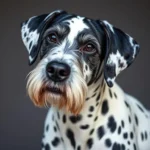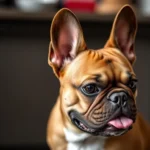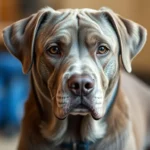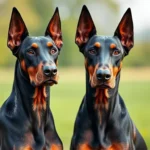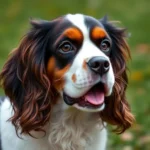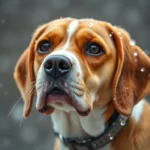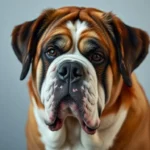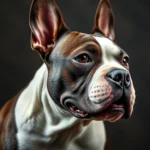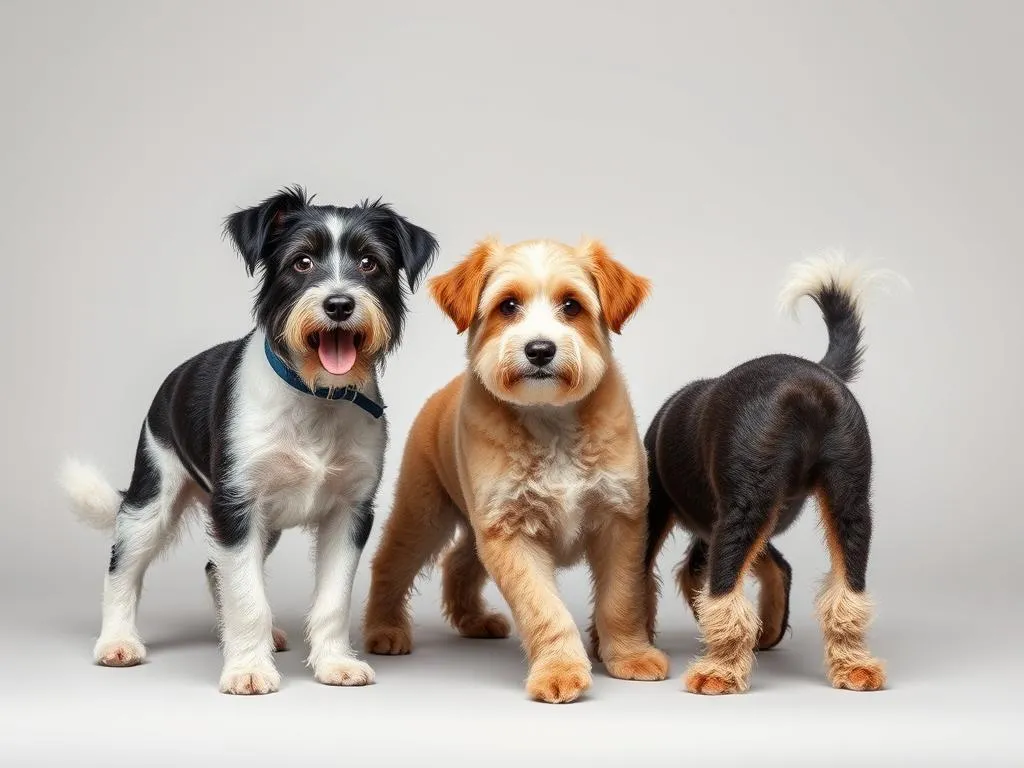
Introduction
The shape of a dog’s tail can tell you much about its breed, personality, and even its history. Among the various tail shapes, dog breeds with curly tails have a unique charm that captivates many dog lovers. A curly tail is not just a cute feature; it serves specific purposes and is often a hallmark of certain breeds. In this article, we’ll explore what curly tails are, their evolutionary significance, and a variety of breeds that sport these delightful appendages.
Understanding the different dog breeds with curly tails is essential for potential dog owners. Each breed comes with its own set of characteristics, temperament, and care needs, making it vital to do thorough research before deciding on a furry companion. This article will delve into both popular and lesser-known breeds that have curly tails, offering insights into their unique traits and care requirements.
Understanding Curly Tails
What Are Curly Tails?
Curly tails are tails that curl over the back or side of a dog, often forming a distinctive spiral shape. Unlike straight tails, which hang down or extend outwards, curly tails can vary in tightness and position depending on the breed. Some are tightly wound, while others may have a looser curl. This unique tail shape adds to the dog’s character and often contributes to its overall appearance.
Evolutionary Purpose
Historically, tail shapes in dogs have evolved for various reasons. Curly tails may serve practical functions, such as aiding in balance when running or jumping, helping with communication by indicating mood or excitement, and even providing warmth when curled up. Certain breeds have developed curly tails due to selective breeding, where the tail’s shape became a desired trait for their specific roles, whether as hunting companions, herders, or household pets.
Popular Dog Breeds with Curly Tails
Basenji
The Basenji is often referred to as the “barkless dog” due to its unique vocalizations. This breed features a tightly curled tail and a sleek, athletic build. Basenjis are known for their intelligence and independence, which can present challenges in training.
- Temperament and Behavior: Basenjis are energetic and curious, often exhibiting a cat-like demeanor. They can be aloof with strangers but are affectionate with their families.
- Care and Grooming Needs: Their short coat requires minimal grooming, but they do need regular exercise to keep them mentally and physically stimulated.
Shiba Inu
The Shiba Inu is a popular breed originating from Japan, recognized for its fox-like appearance and playful demeanor. Their curled tail adds to their charm, making them a favorite among dog enthusiasts.
- Temperament and Behavior: Shibas are spirited and confident, often displaying a strong-willed personality. They are loyal but can sometimes be stubborn.
- Care and Grooming Needs: With a double coat, Shibas require regular brushing, especially during shedding seasons. They also need daily exercise to maintain their health.
American Eskimo Dog
Despite its name, the American Eskimo Dog is not from Alaska but is a breed known for its fluffy coat and curled tail. They come in three sizes: toy, miniature, and standard, and all varieties share a friendly disposition.
- Temperament and Behavior: American Eskimo Dogs are intelligent, alert, and eager to please, making them excellent family pets. They are known for being good with children.
- Care and Grooming Needs: This breed has a thick coat that requires regular brushing to prevent mats. They also enjoy mental stimulation and physical activities.
Pug
The Pug is a small breed with a distinctive curled tail and a charming personality. Known for their playful and affectionate nature, Pugs quickly become beloved family members.
- Temperament and Behavior: Pugs are sociable and enjoy being around people. They can be mischievous, often seeking attention and playtime.
- Care and Grooming Needs: Pugs have short coats that are easy to maintain, but they do require regular eye cleaning due to their prominent eyes. They also need moderate exercise to prevent obesity.
Chow Chow
The Chow Chow is recognized for its lion-like mane and signature curled tail. This breed has a distinctive appearance and a unique temperament that sets it apart.
- Temperament and Behavior: Chow Chows are known for their aloofness and independence. They can be protective of their families but may not be as sociable with strangers.
- Care and Grooming Needs: Their thick double coat requires regular grooming to prevent matting, and they benefit from socialization to mitigate their reserved nature.
Keeshond
With its fluffy coat and curled tail, the Keeshond is a striking breed that is both friendly and alert. They are often referred to as “the smiling Dutchman” due to their facial markings.
- Temperament and Behavior: Keeshonds are affectionate, intelligent, and good with children. They thrive on companionship and enjoy being part of family activities.
- Care and Grooming Needs: Their thick coat requires regular brushing to keep it healthy and free of tangles. They also need daily exercise to stay fit.
Lesser-Known Dog Breeds with Curly Tails
Finnish Spitz
The Finnish Spitz is a lively breed known for its fox-like appearance and curled tail. This breed is often recognized for its unique barking style and lively nature.
- Temperament and Behavior: Finnish Spitz dogs are energetic and alert, making them excellent watchdogs. They are friendly but can be reserved with strangers.
- Care and Grooming Needs: Their double coat requires regular brushing, especially during shedding periods. They also need plenty of exercise to keep them happy.
Coton de Tulear
The Coton de Tulear is a small, fluffy breed known for its soft coat and charming personality. Their tails curl over their backs, adding to their adorable appearance.
- Temperament and Behavior: Coton de Tulears are friendly and affectionate, making them wonderful companions. They are playful and enjoy being with their families.
- Care and Grooming Needs: Their long, cotton-like coat requires regular grooming to prevent tangles. They also require moderate exercise to stay healthy.
Norwegian Elkhound
The Norwegian Elkhound is a robust breed with a curled tail and a thick, weather-resistant coat. Originally bred for hunting, they are known for their strength and stamina.
- Temperament and Behavior: Norwegian Elkhounds are loyal and courageous, often displaying a strong protective instinct. They are friendly and good with children.
- Care and Grooming Needs: Their thick coat requires regular brushing, and they need plenty of exercise to satisfy their active nature.
Factors to Consider When Choosing a Dog with a Curly Tail
Space and Environment
When considering a dog breed with a curly tail, it is essential to evaluate your living space. Some breeds may do well in apartments, while others may require a house with a yard. It’s crucial to create a safe and stimulating outdoor environment for these active dogs.
Exercise Needs
Curly-tailed breeds often have significant exercise requirements. Daily walks, playtime, and mental challenges are vital to keeping them healthy and happy. Activities such as fetch, agility training, or even swimming can be beneficial.
Grooming Requirements
Grooming needs can vary significantly among curly-tailed breeds. Some may have short coats that require minimal maintenance, while others may have long, fluffy coats needing regular brushing to prevent mats. Understanding the grooming requirements of each breed is essential for ensuring their comfort and health.
Training and Socialization
Early training and socialization are critical for all dog breeds, especially those with strong personalities like Shiba Inus or Chow Chows. Positive reinforcement techniques work best, and exposing your dog to various environments and experiences will help them become well-rounded companions.
Health Considerations for Curly-Tailed Breeds
Common Health Issues
Like all dog breeds, those with curly tails can be prone to specific health issues. For instance, Pugs may face respiratory problems due to their brachycephalic nature, while Chow Chows may be susceptible to eye issues. Regular veterinary check-ups are crucial for catching any health concerns early.
Preventative Care
To maintain the health of your curly-tailed dog, focus on a balanced diet, regular exercise, and preventative care. This includes vaccinations, flea and tick prevention, and dental care. A well-rounded approach will help ensure your furry friend enjoys a long and healthy life.
Conclusion
Curly-tailed dog breeds are not only visually appealing but also come with unique temperaments and care requirements. From the spirited Basenji to the affectionate Coton de Tulear, these breeds offer a range of personalities suited to various lifestyles. If you’re considering adding a dog to your family, think about the beauty and uniqueness of dog breeds with curly tails. Remember that responsible ownership involves understanding the breed’s needs and ensuring you can provide a loving, healthy environment.
Frequently Asked Questions (FAQs)
What are some other dog breeds with curly tails?
In addition to those mentioned, other breeds with curly tails include the Akita, Bichon Frise, and the Tibetan Terrier. Each breed has its own unique characteristics and care needs.
Do curly-tailed dogs require special grooming?
While some curly-tailed dogs have minimal grooming needs, others may require regular brushing and care to prevent mats and tangles. It’s essential to understand the specific grooming requirements of the breed you choose.
Are curly-tailed dogs good with children?
Many curly-tailed breeds like the American Eskimo Dog and the Keeshond are known for being good with children. However, individual temperaments vary, so it’s vital to consider the specific dog’s personality and socialization.
How can I adopt a curly-tailed dog?
To adopt a curly-tailed dog, consider visiting local animal shelters, rescue organizations, or breed-specific clubs that focus on rehoming dogs in need. Research online or reach out to local communities to find available dogs looking for loving homes.

